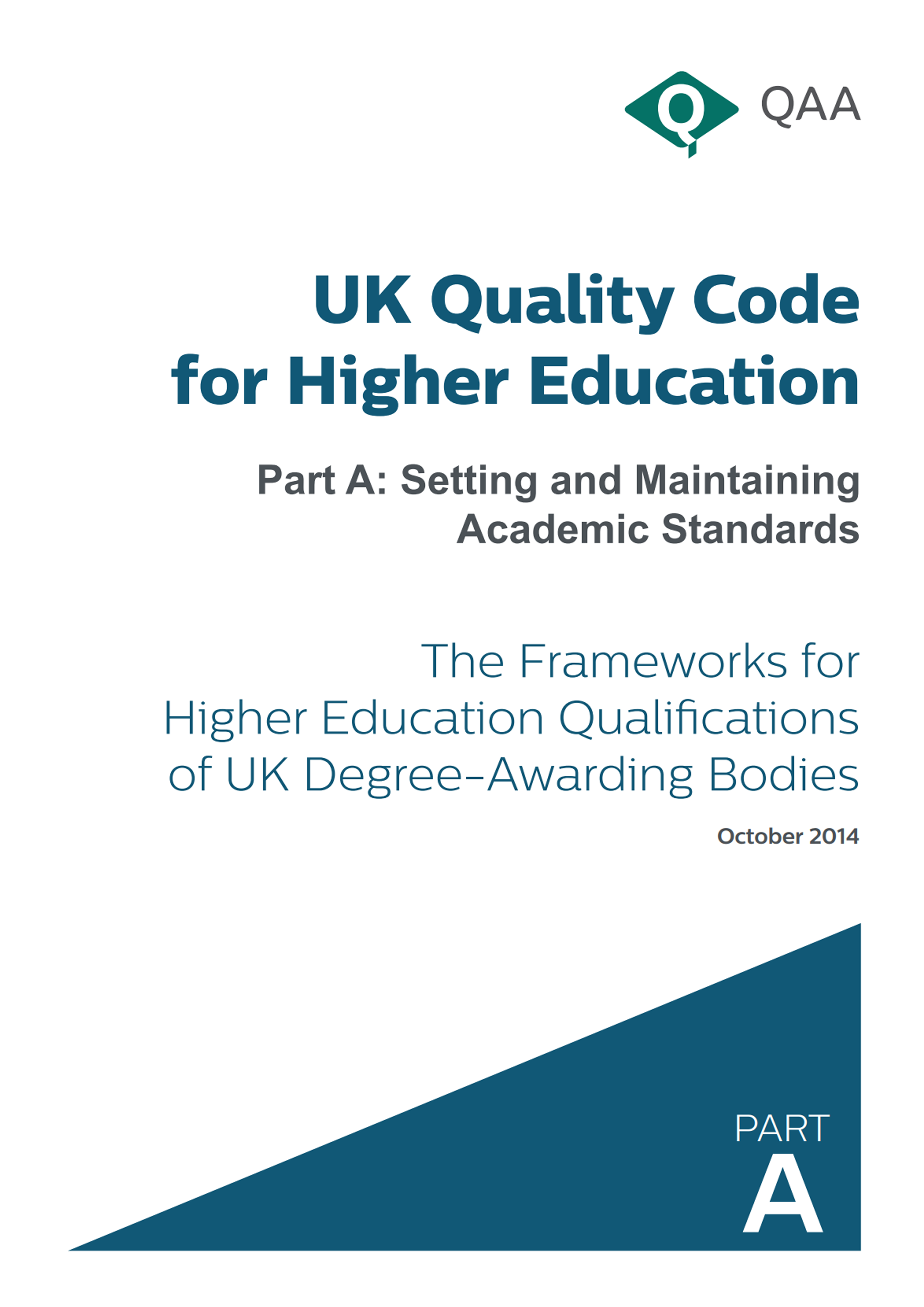
Typology: Book
Language: English
Date: 2014
UK Quality Code for Higher Education Part A: Setting and Maintaining Academic Standards - The Frameworks for Higher Education Qualifications of UK Degree-Awarding Bodies
Theme: Curriculum Design
Author: Quality Assurance Agency for Higher Education (QAA).
Keywords: Framework, Quality assurance; qualification, conventions; learning outcomes
Description/Abstract or Content/Index
Link
APA Reference
DOI
Description/Abstract or Content/Index
CONTENT: The UK Quality Code for Higher Education (Quality Code) is the definitive reference point for all UK higher education providers.1 It makes clear what higher education providers are required to do, what they can expect of each other, and what the general public can expect of them. The Quality Code covers all four nations of the UK (England, Northern Ireland, Scotland and Wales) and all providers of UK higher education operating internationally.
It protects the interests of all students, regardless of where they are studying or whether they are full-time, part-time, undergraduate or postgraduate students. The Quality Code has three Parts. Part A: Setting and Maintaining Academic Standards contains three Chapters and seven Expectations. Each of the 11 Chapters of Part B: Assuring and Enhancing Academic Quality, and Part C: Information about Higher Education provision contain a single Expectation. An Expectation expresses the key principle that the higher education community has identified as essential for the assurance of academic standards and quality within the area covered by the respective Chapter or Part. Higher education providers reviewed by the Quality Assurance Agency for Higher Education (QAA) are required to meet all the Expectations. The manner in which they do so is their own responsibility. QAA carries out reviews to check whether higher education providers are meeting the Expectations.2 The Expectations in Part C and each Chapter of Part B are accompanied by a series of Indicators that reflect sound practice, and through which providers can demonstrate they are meeting the relevant Expectation. Indicators are not designed to be used as a checklist; they are intended to help providers reflect on and develop their regulations, procedures and practices to demonstrate that the Expectations in the Quality Code are being met. Each Indicator is numbered and printed in bold and is supported by an explanatory note that gives more information about it, together with examples of how the Indicator may be interpreted in practice. Indicators are grouped into clusters under a heading. There are no Indicators in Part A. Explanatory text supports each of the Expectations. Each Part and Chapter has been developed by QAA through an extensive process of consultation with higher education providers; their representative bodies; the National Union of Students; professional, statutory and regulatory bodies; and other interested parties. Higher education providers are also responsible for meeting the requirements of legislation and any other regulatory requirements placed upon them, for example by funding bodies. The Quality Code does not interpret legislation nor does it incorporate statutory or regulatory requirements. Sources of information about other require conents and examples of guidance and good practice are signposted within the Part or Chapter where appropriate. Higher education providers are responsible for how they use these resources. The UK Quality Code for Higher Education: General Introduction3 should be considered in conjunction with this document. It provides a technical introduction for users, including guidance concerning the terminology used and a quick-reference glossary.
Link
APA Reference
Quality Assurance Agency for Higher Education (QAA). (2014). UK quality code for higher education. Part A: setting and maintaining academic standards. The frameworks for higher education qualifications of UK degree-awarding bodies.
DOI

